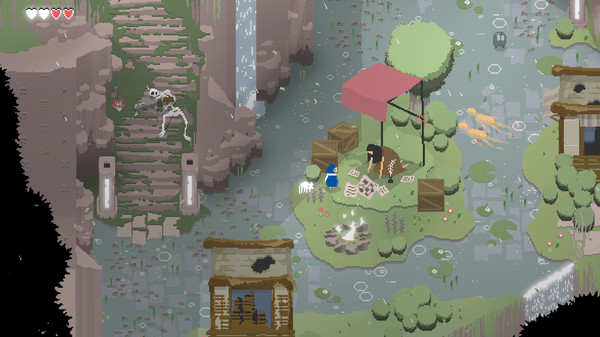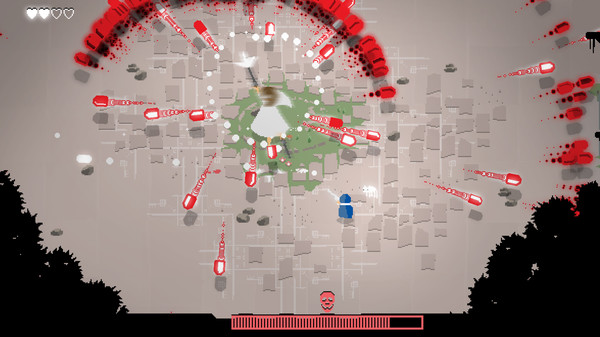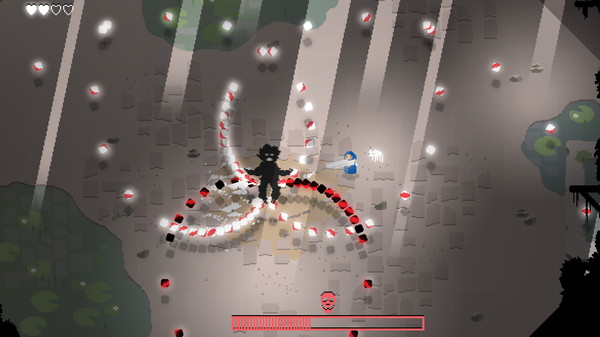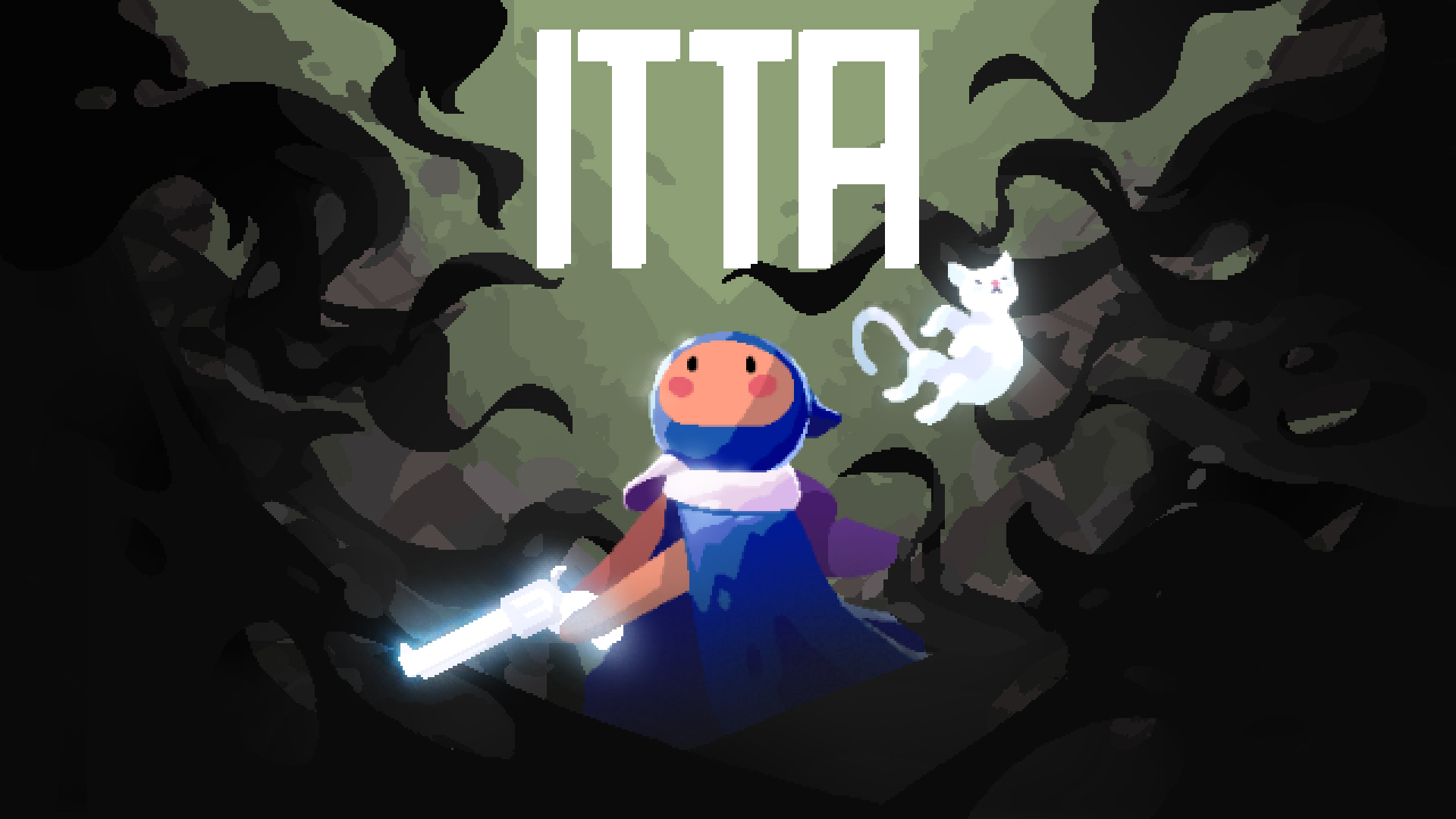Any misunderstandings you might glean from ITTA‘s cutesy pixel-art style are quickly put to rest in the game’s opening moments. While your time exploring may see you winding through a beautiful, almost idyllic world, it merely provides a contrast for the darkness lurking underneath.
Like many bullet-hell games, Itta is mostly about taking down a series of increasingly volatile villains while playing as the game’s eponymous hero. These battles often culminate in brutal, if not-quite-gory deaths for the bosses in the times where they don’t end in death for Itta.
However, death won’t keep Itta down. Multiple lives aren’t just a game mechanic in ITTA: they have an in-game purpose as well. After each death, Itta is brought back to life outside the den of any big bad that proves just a little too big and a little too bad.
But it’s because Itta has a destiny woven into the game’s narrative that death isn’t the end.
ITTA Review: A Somber Stroll Through Bullet-Hell

This binding to a tragic fate is not reserved for Itta, however. During her journey, she encounters others that are equally tied to a dour existence they can’t seem to escape.
The reactions of these other denizens to Itta’s activities range from gracious to openly hostile. The designers clearly set out to make you question if what you are doing is really in the name of good — even if I never felt that ambiguity ever hit home for me.
Perhaps this is what was aimed for all along, however. I never felt the need to dwell on the right or wrong of Itta’s work because it was what I was there to do, which is largely the experience that Itta herself has.
On a gameplay level, ITTA is serviceable if a bit repetitive. There is admirable effort made to produce a unique set of bosses to take on, but with such basic controls, they all end up feeling quite similar. It doesn’t help that Itta has only a few moves at her disposal.
In addition to an ultimate that charges with near misses, you can move, you can shoot, and you can dodge. The latter renders Itta invulnerable for the majority of the animation.

This does mean that when the bullets hit the fan, every fight can become a bit samey. Roll, roll, and roll some more. As long as you aren’t finishing a roll directly on a projectile, you can enter into your next roll without taking any damage. If you hold your trigger, you’ll even squeeze off a shot at the villain in that small moment.
As an admittedly mediocre bullet-hell gamer, it left me with only two options: Attempt to minimize rolling and relying on dodges and shot volume — setting myself up for failure against the game’s later foes — or rely on the roll, which is, quite frankly, overpowered, and making short work of everyone.
For the development team, this may not even read as much of a problem; they clearly value the work put into the game’s story. ITTA even includes the option to double your damage or go fully invincible if a boss is giving you trouble. It’s a nice bit of accessibility if you just want to progress through the tale.
As to whether that story justifies its place as the central pillar of the game is another question entirely.
I enjoyed playing through the various levels and seeing Itta’s interactions with its residents evolve, but I also wasn’t blown away by the narrative. Had the game instead released as a pure bullet-hell sandbox of unique battles, I don’t think it would have harmed my enjoyment of it all that much.
ITTA Review — The Bottom Line

Pros
- Beautiful artwork
- Frenetic play that makes it easy to play just one fight more
Cons
- Latter boss fights can feel repetitive
- Confusion can easily lead to wasted time
In coming to a final conclusion on ITTA, I find myself of two minds, caused by a properly frustrating experience I had that is also one that I do think will only happen for a minority of players. To avoid mild spoilers on solving a puzzle, skip the next paragraph.
In order to advance the story, a pillar needed to be pushed into position to block a waterfall. Although I tried this initially, I must have missed the precise location required and believed that wasn’t the solution.
The game’s simple aesthetic and hands-off approach to guidance really backfired for me here; I felt aimless, and it led to a significant period of wasted time attempting alternate solutions and searching the levels for signs of any missed items that could solve the problem.
While the snag didn’t ruin my overall experience entirely, it demonstrated the risk of a game that commits so hard to being mysterious.
For such a short game, spending as much time as I did wandering around lost was a big dent. With that said, and noting that while most players will avoid that exact pitfall, there were other areas I could see similar confusion creeping up caused by the minimalist approach, I think it’s likely most players will have a frustration-free jaunt through the gardens.
[Note: A copy of ITTA was provided by Glass Revolver for the purpose of this review.]







Published: Apr 22, 2020 04:01 pm